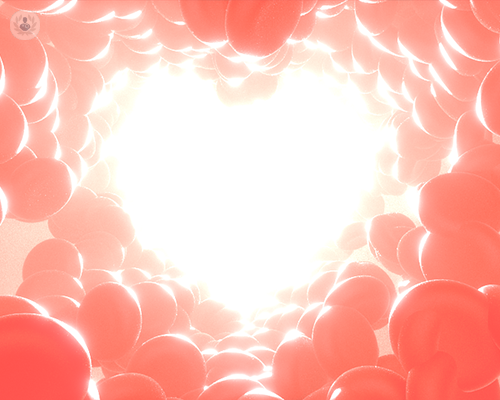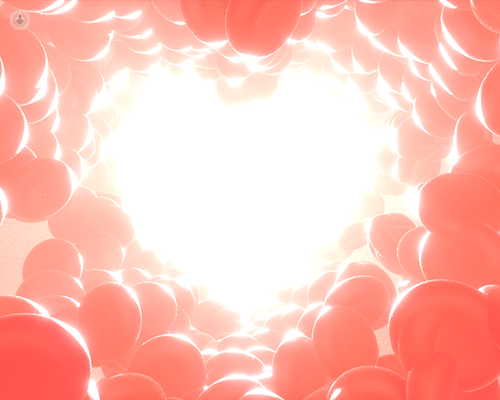
Thalassaemia vs iron-deficiency anaemia: know the difference
Thalassaemia is a type of anaemia that causes a decrease in haemoglobin levels. This makes the red blood cells fragile and short-lived. It should not be confused with iron-deficiency anaemia, since, normally, thalassemia does not present iron deficiency.

What is thalassaemia?
Thalassaemia is a type of congenital and hereditary anaemia very common in the Mediterranean region. It results in a decrease in haemoglobin levels due to an alteration in its synthesis or formation, or more specifically, the globin fraction of the haemoglobin chain. This makes the red blood cells fragile with a low survival rate as they circulate through the bloodstream.
Diagnosis of Thalassaemia
Thalassaemia diagnosis, as in any anaemic syndromic process, involves the completion of a complete anaemnesis, investigating both the patient's family and personal history, as well as a thorough and systematised clinical examination.
Subsequently, a haemotologist will identify the relevant laboratory haematimetric tests which can include a haemogram, biochemistry tests with profile of iron metabolism, folic acid and vitamin B12, and, if necessary, a study of erythrocyte haemoglobins to confirm the diagnosis of thalassaemia.
A morphological study of a patient's blood sample by the haematologist is also very useful. It can identify red blood cells of different morphology and smaller size, since they are not formed properly. Among them there is particular form of red blood cells that are a characteristic of thalassaemia, although not specific to this condition.
Types of Thalassaemia
Thalassaemia is categorised firstly as alpha or beta thalassaemia, and then, depending on the level of the deficit, is classified as: major-intermediate-minor or thalassaemic trait.
Traditionally and indirectly, certain analytical data may be oriented to a greater or lesser extent toward anaemia of one type or another. Typically thalassaemias are translated into the blood count by an increase in the number of red blood cells, above normal, with decreased haemoglobin levels and a small erythrocyte size, which is reflected by a laboratory parameter called the mean corpuscular volume (MCV). From the mid to late twentieth century - when electrophoresis techniques or quantification of different types of haemoglobin were perfected - a formula was used that correlated the total number of red blood cells with haemoglobin levels and erythrocyte size, which was called Index of England, a term which is nowadays practically disregarded outside the pure academic scope.
Signs and Symptoms of Thalassaemia
The signs and symptoms of thalassaemia are virtually indistinguishable from any other anaemic syndrome. Among other symptoms, it can cause:
- Tiredness
- Paleness or jaundice due to increased bilirubin by the increased destruction of red blood cells
- Tachycardia
- Headache
- Discreet enlargement of the liver and spleen
How to differentiate thalassaemia from iron deficiency anaemia?
The diagnostic approach to thalassaemia is a source of confusion not only among the general population, but also sometimes within the same medical group. Most iron deficiency anaemias are often mistaken for thalassaemia. As a general rule, thalassaemia will show a normal or increased iron metabolism, since the accelerated destruction of red blood cells releases metabolites into the bloodstream, among them iron that will be deposited as ferritin in the liver. In some cases, thalassaemia may be accompanied by intrinsic iron deficiency, if the study of the ferric profile performed confirms this. Where thalassaemia is suspected, the confirmatory diagnosis will be made by electrophoresis sequencing the different haemoglobin bands of the red blood cell.
Treatment of Thalassaemia
Thalassaemia treatment will depend on the degree of the condition, ranging from simply observing the patient to treatment with vitamin supplements, such as folic acid, or even, in the most extreme cases, transplantation of haematopoietic progenitors.

